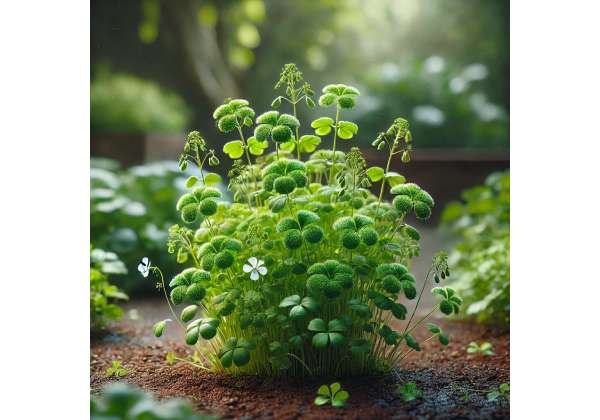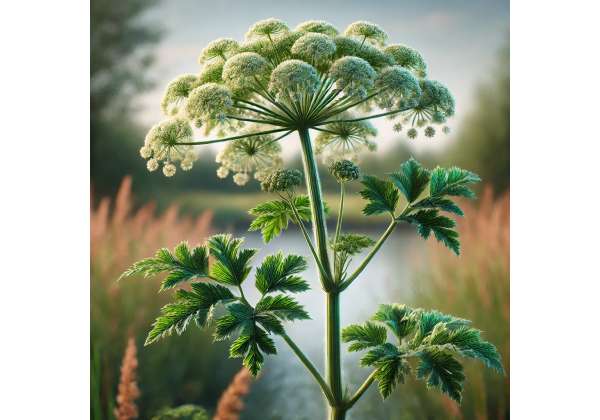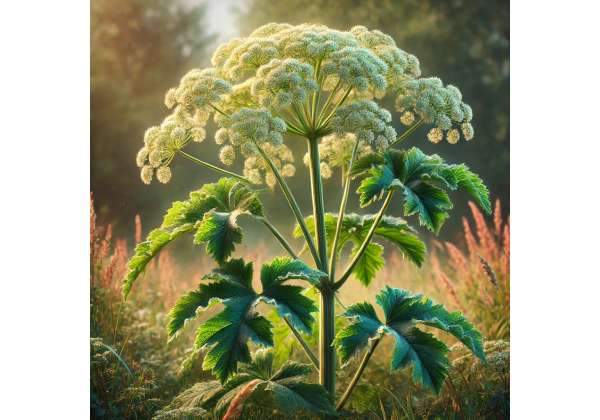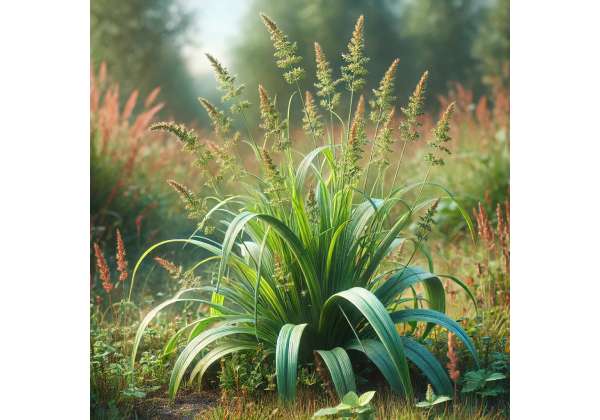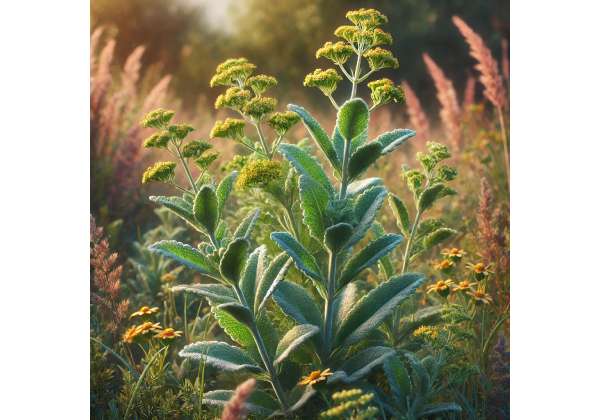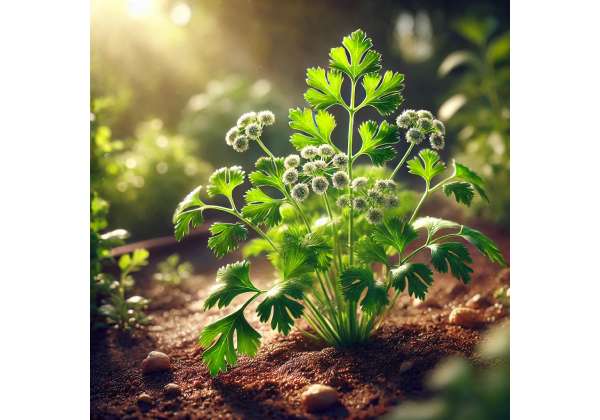Cubeb Berry: Traditional Benefits, Modern Uses, and Phytochemical Profile
Cubeb berry is an extraordinary spice with a rich heritage in traditional medicine and culinary arts. Known for its distinct, peppery flavor with hints of allspice and a slightly bitter edge, cubeb berry is derived from the dried fruit of the Piper cubeba plant, a member of the Piperaceae family. Native to the islands of Indonesia and cultivated in...
Crowfoot: Health Benefits, Healing Properties, and Uses
Crowfoot is a fascinating herb celebrated for its distinctive, finely divided leaves that resemble the spread of a bird’s foot. This unique appearance isn’t its only charm—crowfoot has been cherished in traditional herbal medicine for centuries due to its impressive array of active compounds and healing properties. Historically used by various cultures to support respiratory health, soothe skin irritations,...
Croton: Benefits, Active Compounds, Medicinal Applications, and Safety
Croton is a fascinating herb steeped in traditional herbal medicine and renowned for its potent properties. As part of the diverse Croton genus within the Euphorbiaceae family, some species—especially Croton tiglium—have been used for centuries in various traditional systems to address digestive ailments, inflammation, and even pain. Although known for its strong purgative effects and potential toxicity if not...
Crocus: Holistic Health Benefits, Culinary Applications, and Medicinal Properties
Crocus is one of nature’s most captivating and versatile plants. Often celebrated for its brilliant, jewel-like blooms that signal the arrival of spring, crocus also hides a rich profile of active compounds and therapeutic properties that have been valued in both traditional medicine and modern wellness practices. While many people recognize the saffron-producing Crocus sativus for its culinary and...
Crinum Lily: Benefits, History, Therapeutic Properties, and Skin Applications
Crinum lily is a stunning perennial plant known for its large, fragrant, and showy blooms that captivate gardeners and nature enthusiasts alike. Belonging to the Amaryllidaceae family, crinum lily has a rich history in traditional medicine and horticulture, prized for both its ornamental beauty and its diverse range of therapeutic applications. Native to tropical and subtropical regions, these magnificent...
Cress: Health Benefits, Medicinal Properties, and Culinary Uses
Cress is a remarkable herb that packs a powerful nutritional punch in a small, peppery leaf. Revered for centuries in various cultures, cress (often referring to garden cress, watercress, or peppercress) is celebrated both as a culinary delight and a natural remedy. Its tangy, slightly spicy flavor not only enlivens salads and sandwiches but also provides a wealth of...
Creeping Thyme: Benefits, Active Ingredients, and Holistic Applications
Creeping thyme is a charming, low-growing herb that not only adds a burst of color and aroma to gardens but also boasts a fascinating array of health-supporting properties. Known for its delicate, aromatic leaves and tiny purple or pink flowers, creeping thyme (often identified as Thymus serpyllum or Thymus praecox) has long been used in traditional herbal medicine, culinary...
Creeping Buttercup: Benefits, Healing Properties, Risks, and Uses
Creeping buttercup is a fascinating herb with a rich natural history and a distinctive profile that has intrigued herbal enthusiasts and researchers alike. Recognized for its bright yellow blossoms and low, spreading growth habit, creeping buttercup (commonly known by its botanical name, Ranunculus repens) has been traditionally both a valued ornamental plant and, in certain cultures, a remedy applied...
Cranberry: Therapeutic Properties, Uses, and Research-Based Health Benefits
Cranberries are a fascinating fruit that have captured the interest of health enthusiasts, chefs, and natural remedy aficionados alike. Native to North America and grown primarily in bogs, cranberries are celebrated not only for their tart, refreshing flavor but also for their impressive nutritional profile and medicinal properties. These small, vibrant red berries are packed with antioxidants, vitamins, and...
Cramp Bark: Antispasmodic Benefits, Uses, and Research-Based Properties
Cramp bark is a cherished herbal remedy with a long history of use for alleviating muscle cramps, menstrual discomfort, and other spasmodic conditions. Known for its distinctive bark that exudes a slightly bitter yet aromatic quality, cramp bark (commonly derived from Viburnum opulus) has been embraced by herbalists and natural health enthusiasts for generations. Traditionally, this herb has been...
Crab Apple: Active Compounds, Therapeutic Uses, and Health Benefits
Crab apple is much more than a pretty ornamental tree—this remarkable fruit has a rich heritage, a vibrant profile of active compounds, and a range of health benefits that have been cherished for centuries. Known for its small, tart fruits and delicate blossoms, the crab apple tree (genus Malus) has been a part of traditional medicine, culinary traditions, and...
Cowslip: Uses, Health Benefits, and Natural Applications
Cowslip is a charming perennial herb with a long-standing history of use in traditional medicine and natural wellness. Recognizable by its bright, nodding yellow flowers and delicate foliage, this herb has captured the attention of herbalists, botanists, and natural health enthusiasts for centuries. Native to Europe and parts of Asia, cowslip (commonly known by its botanical name Primula veris)...
Cowbane: Benefits, Uses, Risks, and Natural Healing Properties
Cowbane is a remarkable herb with a storied past in traditional herbal medicine. Despite its ominous name, cowbane has been valued by herbalists for its potent biological activity and versatile applications. Used cautiously and with respect for its powerful nature, cowbane has a rich history of supporting various aspects of health—from alleviating inflammation and supporting digestive comfort to promoting...
Cow Parsnip: Benefits, Active Compounds, Properties, and Health Applications
Cow parsnip is an impressive herb that stands out not only for its striking appearance but also for its long-standing use in traditional medicine. Known scientifically as Heracleum lanatum, cow parsnip is a member of the Apiaceae family and has been cherished by indigenous peoples for centuries. With its large, umbrella-like clusters of white flowers and broad, deeply lobed...
Couch Grass: In-Depth Overview of Health Benefits, Properties, and Applications
Couch grass is a time-honored herb that has quietly played an important role in traditional herbal medicine for centuries. Known for its resilient, grassy appearance and its robust health benefits, couch grass (Elymus repens) is often found in lawns, meadows, and along roadside ditches. Despite its reputation as a common weed, this herb is a powerhouse of natural healing,...
Cotton Root: Comprehensive Guide to Benefits, Uses, and Therapeutic Properties
Cotton root is an extraordinary natural remedy derived from the deep, fibrous roots of the cotton plant. Often overlooked in favor of its more celebrated cotton fibers, cotton root has a long history of use in traditional medicine across various cultures. Today, modern herbalists and natural health enthusiasts are beginning to appreciate its rich array of bioactive compounds and...
Costmary: Proven Health Benefits, Active Ingridients, Risks, and Applications
Costmary is a charming and versatile herb that has been cherished for centuries in traditional herbal medicine. Known scientifically as Tanacetum balsamita, costmary is admired for its aromatic, slightly minty leaves and its rich, complex flavor that adds a unique touch to culinary dishes. Beyond its culinary uses, costmary boasts a fascinating array of health benefits and therapeutic properties....
Coronilla: Health Benefits, Active Compounds, Properties, and Uses
Coronilla is a fascinating herb with a rich heritage in traditional herbal medicine. Revered for its striking beauty and diverse therapeutic properties, this herb has been used for centuries to support overall health and well-being. With its delicate clusters of yellow flowers and finely divided foliage, Coronilla not only enhances gardens with its ornamental appeal but also offers a...
Electrotherapy for Diabetic Retinopathy: The Role of Transcorneal Electrical Stimulation in Vision Improvement
Diabetic retinopathy often compromises daily life by impairing vision. Transcorneal Electrical Stimulation (TCE) is a specialized electrotherapy that sends low-level electrical pulses through the cornea to activate retinal cells and promote functional improvements. This innovative approach has attracted growing attention as a promising addition to existing diabetic retinopathy management strategies. By targeting the eye’s complex neural network and offering...
Electroretinography Neurostimulation: A New Way to Treat Retinitis Pigmentosa
Retinitis Pigmentosa (RP) is a group of inherited disorders causing gradual, progressive vision loss due to retinal degeneration. Over time, individuals may lose peripheral and night vision, eventually facing severe visual impairment or blindness. While management strategies have historically centered on vitamins, protective measures, or genetic counseling, a novel approach—electroretinography (ERG) neurostimulation—now offers fresh hope. By targeting retinal cells...
Durysta (Bimatoprost Implant) for Glaucoma: Six-Month IOP Control with a Single Implant
Glaucoma is a complex eye disorder and a major cause of preventable vision loss worldwide. When left unchecked, this condition gradually damages the optic nerve, often without symptoms until vision is already severely compromised. Traditional treatments, such as daily eye drops, can effectively control intraocular pressure (IOP) but often depend on strict adherence. Durysta, a bimatoprost implant, offers a...
Durezol: Managing Postoperative Ocular Inflammation with a Modern Difluprednate Treatment
1. Understanding Postoperative Ocular Inflammation: Durezol’s Role Postoperative ocular inflammation is a common clinical challenge that follows surgeries like cataract removal, corneal transplants, or vitrectomy procedures. Even the most meticulous surgical techniques can trigger an inflammatory response in the eye as tissue undergoes trauma, leading to redness, swelling, photophobia, and pain if not adequately addressed. This inflammation, although a natural...
Durezol (Difluprednate) for Uveitis: Advanced Management of Eye Inflammation
Uveitis is a broad term for a set of inflammatory conditions affecting various parts of the uveal tract of the eye, typically involving the iris, ciliary body, or choroid. When left untreated or poorly managed, it can result in complications like glaucoma, cataracts, or irreversible damage to the optic nerve. Traditional therapeutic strategies for uveitis include corticosteroid eye drops,...
Drug-Eluting Contact Lenses: A Breakthrough in Glaucoma Drug Delivery
1. Understanding Drug-Eluting Contact Lenses and Glaucoma Management Drug-eluting contact lenses represent a novel and potentially revolutionary approach for delivering glaucoma medications directly to the eye. Glaucoma itself is a group of eye conditions characterized by damage to the optic nerve, often linked with elevated intraocular pressure (IOP). Over time, this damage can lead to vision loss if not adequately...
Diabetic Macular Edema Management with Micropulse Laser Treatment: A Minimally Invasive Approach
1. Exploring Micropulse Laser Treatment: A Transformative Therapy for DME Micropulse laser treatment has gained recognition as a modern, minimally invasive approach for individuals grappling with diabetic macular edema (DME). By delivering pulses of low-energy laser energy at brief intervals, this therapy aims to preserve healthy retinal tissue while tackling the root causes of fluid accumulation. Unlike traditional continuous-wave laser...
Cornflower: In-Depth Review of Health Benefits, Uses, and Natural Healing Properties
Cornflower is much more than just a pretty blue bloom in your garden. With its striking azure petals and delicate structure, this herb has been admired for its ornamental beauty and revered for its potent medicinal properties for centuries. Known scientifically as Centaurea cyanus, cornflower has a rich history in traditional herbal medicine, where it was used to soothe...
Corn Silk: Complete Guide to Health Benefits, Uses, and Therapeutic Applications
Corn silk is much more than just the long, thread-like strands that hang from an ear of corn. For centuries, corn silk has been cherished in traditional medicine for its remarkable healing properties and is now emerging as a popular natural remedy in modern wellness practices. Derived from the silky, fine fibers found in the husk of corn, this...
Corkwood: Benefits, Active Compounds, Medicinal Properties, and Uses
Corkwood is a fascinating and versatile herb that has been valued for its unique therapeutic properties for centuries. Often celebrated in traditional medicine, this herb is prized not only for its striking appearance—with its textured, cork-like bark and distinctive foliage—but also for its extensive range of health benefits. From supporting skin health to aiding in digestion and reducing inflammation,...
Coriander: Complete Guide to Culinary Uses, Properties, and Medicinal Benefits
Coriander is a truly versatile herb that has been a culinary and medicinal staple for thousands of years. Known for its bright, aromatic leaves (often called cilantro in some parts of the world) and its warm, spicy seeds, coriander has enriched cuisines and natural remedies across cultures. Its unique flavor and robust health benefits have made it one of...
Copperleaf: Health Benefits, Active Compounds, and Applications
Copperleaf is a remarkable plant that’s often overlooked in mainstream herbal medicine but has an incredibly rich history and therapeutic potential. Known for its vibrant, copper-colored leaves, this plant thrives in tropical regions, offering not only aesthetic beauty but a wide range of health benefits. The Copperleaf plant is used in a variety of natural remedies, from digestive aids...







